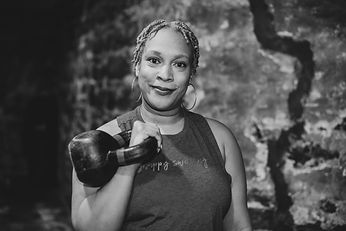Movement for Mood, Energy,
and Self-esteem.
Have you ever stopped to think about how what you are eating can be impacting your mood? It's chemistry. When we put good things in at the frequency we need to for a duration of time we often see and feel results not just in our body but in our overall functioning and also in our mood.

Meet Jessica Thompson,
owner of
GetFit615and
resident Trainer at SmithBHW
Contact Jessica to start your journey to a healthy lifestyle through movement today.
All that's missing is you.
Let's connect.
Thank you so much for being with us! Tell us a little bit about what inspired you to be a trainer?
Thank you so much for having me! My journey to becoming a trainer certainly wasn’t linear. I started off with my own fitness journey and worked with trainers in the past. The thing I was missing was the personal connection to the journey I was on at the time. I decided to become a wellness coach to help with my own mindset and ultimately help others. I went to a gym after my mom passed and found a place that was not only welcoming to my fitness journey, but also to my personal journey. I was in grief and needed to slowly walk into the journey. My trainer at the time was understanding of those needs and saw my ability to do the same. She took a chance on my abilities and the rest was history. I am so grateful for the work I get to do with clients on a daily basis.
What is your approach to working with new clients?
My approach to working with clients is always centered around the client first. I do an assessment followed by a conversation with each client about what they want to gain out of a fitness program. We work together, always. It is a very personal and unique experience. We craft a program that works and sometimes that takes some trial and error, but it’s the beauty discovering movement that makes sense and sustainable.
In what ways have you seen movement and exercise impact mental/emotional health?
Movement is an opportunity to make the mind/body connection. It allows us to connect to what our bodies are holding and address them in real time. It can also unlock a new level of coping skills. If movement, like running or lifting, can allow us to clear the mind through the body, we can then address the other things at a deeper level. When we can unlock a true connection to our bodies, we can establish a true connection to all the other aspects of the wellness journey. It starts with a plan and discipline.
How do you work with clients experiencing mental/emotional challenges?
I take a trauma informed approach to all movements. I ask for consent, I assess the energy of the client that day and we make adjustments based on that. It is always client first. If there are movements that cause triggers, we navigate them with care and intention. There are lots of variations we can move through to make sure the client feels safe and seen.
How do you feel collaborating with a behavioral health specialist can help someone who is trying to make lifestyle changes regarding moving their body?
It’s important for all people who work with your body to have a baseline of understanding what is going on in all aspects. I don’t need to know all the ins and outs of an experience to be able to navigate a plan that is appropriate, but it’s nice to have a general understanding. I can then curate a plan that is suitable and fitting for the next steps.
What is needed for a person to see the best results when working to change their habits?
The first thing is a commitment to change for longevity. It’s taking weight loss off the table as the primary goal and putting wellness at the forefront. It’s in the daily behaviors for sustainability. What do you like? What can you sustain? What affirmations can you tell yourself each day to get you to start and continue? It’s a daily decision. It’s about 3x52. It’s not going to connect every single day, but sometimes you can push through. Sometimes you have to honor rest. Learning to listen to your unique body’s needs takes time and intentionality.
What advice would you give someone who is wanting to take the first steps to acknowledge and change their exercise/movement habits but may be on the fence?
If you’re on the fence, just start. Hire a professional to help you with what to do to take that off the plate. It can be scary for sure. But if you can find someone you trust, who gets to know you on a human level, it is possible to find a routine that is manageable and sustainable. It’s okay to slowly walk into it. Start with once a week. Then add a day when it feels like you’re ready. Then another day. The goal is always 3x52 as a baseline. Mix in things you like. Dance if you want to, go for walks, stretch. Just start moving where you are and let the professional fill the gaps.
Lastly, What would you say is a way of moving that we may overlook but can be helpful for us?
Walking is moving. Cleaning the house is moving. Picking up and putting down things is movement. Movement is about functionality. An early morning stretch for 5 minutes a day can make all the difference in joint functionality. March while you’re watching your favorite show. Do some deep core breathing every morning and night. It’s all about the long game.